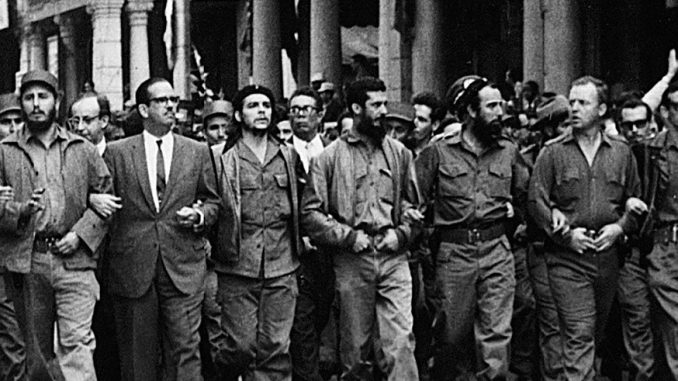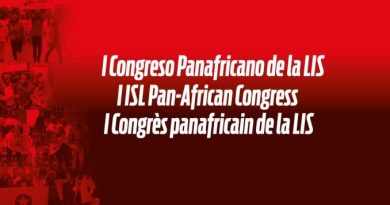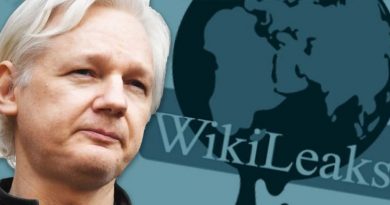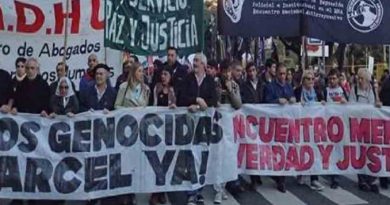The Cuban Revolution: lessons and discussions
We share the report made by our colleague Alejandro Bodart in the issue of Panorama Internacional del 8/10/2020
January 1st 1959 the Cuban Revolution triumphed. The dictator Batista fled the island while the guerrilla troops commanded by Fidel Castro entered Santiago, and those led by Che and Camilo Cienfuegos took Havana.
Cuba would be the first country in America to expropriate the bourgeoisie, and its emergence inspired and radicalized an entire generation in Latin America and the world.
Cuba was practically a colony of the United States, ruled by the bloodthirsty and corrupt Batista dictatorship.
The movement 26 Julio who led the revolution was neither Marxist nor anti-capitalist, but nationalist and antidictatorial.
His program was limited to removing Batista, install a bourgeois democratic regime and implement a limited agrarian reform.
It had the support of a sector of the landowners opposed to Batista and sectors of Yankee imperialism that were excluded from the island's businesses..
But the triumph of the guerrillas caused a leap in the rise of the mass movement.
This one had been advancing in the peasantry, that together with the guerrillas had long been implementing the agrarian reform in the territories it controlled.
After the fall of Batista, he was joined by a wave of generalized strikes in the cities that lasted much of the year.
This pressure was pushing the management to take measures that, without crossing the limits of capitalism, friction with imperialism increased, especially the executions of the repressors of the dictatorship and the lowering of electricity and telephone rates, managed by Yankee companies.
This would initiate the process that Che defined as a counter-coup revolution..
The United States cut off the import of oil for refining in Cuba, the new government then started importing oil from the USSR. The Yankee oil companies refused to refine it and the government ended up expropriating them.
In the same way, the telephone and electricity companies ended before the sabotage they carried out on public services.
Then came the trade embargo and the liquidation of the Cuban sugar quota in the Yankee market. The sugar factories were also expropriated at the same time that an agreement was signed with the USSR to buy Cuban sugar at a preferential price.
By the end of the first year of the revolution, Banks and hundreds of other companies had also been nationalized, landowners had been expropriated and a profound agrarian reform had been initiated and expropriated homes had been granted to thousands of tenants, among other measures.
A new Cuba was born, free and independent of the yankee empire, and this could not be forgiven.
The United States imposed what would be the longest and most brutal blockade in history, to try to strangle the revolution. They would not make it.
As they had no margin to invade with their own troops, They armed a mercenary invasion organized by the CIA, who was defeated at the Bay of Pigs, humiliating the greatest empire on the planet.
In 1961, Fidel declared the socialist character of the Cuban revolution. An event had occurred that had no precedent.
A non-Marxist leadership, of nationalist petty bourgeois origin and with a program of democratic reforms, driven by the need to respond to the demands of the mobilized people and to face the pressures of imperialism, liquidated the armed forces and fundamental institutions of the bourgeois state and expropriated the bourgeoisie.
A huge wave of revolutionary enthusiasm was unleashed throughout the Latin American and world avant-garde, and deep debates were opened on the left.
First, how it came about independently of the Stalinist USSR, quickly became an example to follow for large sectors of the vanguard disillusioned with Stalinism, who came from crushing the Hungarian revolution a few years before.
Regrettably, many tried to translate the Cuban model mechanically to very different realities.
The Cuban leadership, and in particular Che, made the guerrilla tactic a permanent strategy, presenting it as the only possible way to revolution.
Our current polemicized with the focus strategy, that replaced the working masses with the guerrilla army as the subject of the revolution.
We pointed out that we were not opposed to the guerrilla tactic, provided it was supported by the mass movement.
But that the strategy of the guerrilla focus was the opposite, I was elitist and wrong at the time, when the mass movement in Latin America was entering a great urban and labor ascent.
Reality proved us right in the most tragic way.
Guerrilla attempts led entire litters of revolutionaries to launch into armed struggle in countries where it was not at all raised.
They detached themselves from the working class and its actual processes, with tragic consequences.
Isolated from the mass movement, were liquidated by the repression in Argentina and other countries.
Che Guevara himself was assassinated trying to bring this policy to Bolivia.
In Trotskyism, the Cuban revolution played a unifying role, approaching the main currents around support for the revolution - Morenoism, Mandelism and the US SWP, who would realize the reunification of the Fourth International.
Nevertheless, Mandelism later came to characterize Castroism as a revolutionary leadership, to support him without criticism, and to adopt its focus strategy.
This led him to support guerrilla groups from various countries against Trotskyist parties..
In Argentina, for example, They accepted as an official section of the fourth the santuchista rupture of the PRT, above the party of our current guided by Nahuel Moreno.
Of course, Santucho and the PRT-ERP would end up leaving the Fourth shortly after.
With the Nicaraguan revolution, Mandelism would go so far as to support Sandinismo while it stopped the revolution and formed a government with the bourgeoisie, even supporting the expulsion of our comrades from the Simón Bolívar Brigade, causing the rupture of the Fourth again.
El SWP, that initially joined with morenism against that avant-garde turn, Impressionist and surrender of Mandelism, would turn years later towards becoming completely Castroist.
Other sectors of Trotskyism made the opposite mistake. As the Castro leadership was not working class and revolutionary, they denied the socialist character of the Cuban revolution, or even they did not know that it was a revolution.
Both of them, both opportunistic and sectarian, they share a wrong method. Match the process to your address. For some, as the direction is not revolutionary, there can be no revolution.
For others, how is there a revolution, its direction must be revolutionary. And the reality is completely different.
The Cuban revolution confirmed the theory of the permanent revolution by the positive.
Cuba could not achieve the democratic conquests that the Movement proposed 26 July without confronting and defeating capitalist imperialism.
And although it was not his initial intention, the Castro leadership had to expropriate the bourgeoisie and liquidate the bourgeois state to implement its program and survive.
At the same time, I would also confirm it by the negative. By not having a revolutionary party and not advancing with workers' democracy and the extension of the revolution throughout Latin America and the world, would inevitably end up regressing and bureaucratizing.
Our current took a few months to identify the turn towards the revolution that the Cuban leadership had given, But he quickly adjusted and adopted a policy that started with defending the Cuban revolution and its conquests against imperialism., but without ceasing to criticize and mark the limitations of his direction, fighting for socialism with democracy and the expansion of the revolution.
The contradiction between the revolution and its leadership is reflected in the conquests that were achieved in Cuba, in which they were pending and in which they were lost.
On an island of scarce resources, it was possible to guarantee the population work, salary, food and shelter; illiteracy ended in record time; and education systems were built, Health, sports and culture of universal access and a quality recognized internationally even by its most bitter enemies.
But to consolidate those conquests and keep moving forward, the revolution had to be deepened.
Instead, the Castro leadership subordinated the country to the Soviet Union and replicated on the island its model of a monolithic one-party regime headed by a privileged bureaucracy.
At the international level, became a satellite of Stalinist diplomacy and a local agent of its counterrevolutionary intervention.
That is why Fidel condemned the Prague Spring and supported the Soviet invasion of Czechoslovakia..
He traveled to Chile to support Salvador Allende and his peaceful path to socialism, clarifying that Chile should not make the revolution as in Cuba.
Given the triumph of the Sandinista revolution in Nicaragua, I call on the Sandinistas not to expropriate the bourgeoisie, saying don't make another Cuba, and supported Ortega's shameful policy of isolating the Salvadoran revolution, saying they don't make another Nicaragua.
More recently, played the same role before the Bolivarian revolution and in support of the repressive regimes of Maduro and Ortega.
Che Guevara had disagreed with an important part of this orientation. He opposed the subordination of the Cuban revolution to the USSR.
He defended the backward countries against the trade policy of the Soviet Union, who denounced as a bourgeois injustice.
He also opposed the Stalinist policy of peaceful coexistence with imperialism.
Aware that the fate of Cuba was tied to the world revolution, there was a policy of trying to extend the revolution. He said that you had to create a, of, three Vietnam.
This led him to leave Cuba, first to fight in Angola, and then to try to raise a guerrilla focus in Bolivia, where he was assassinated in October 1967.
Because, beyond the differences, We vindicate Che as a consistent revolutionary and militant of the permanent revolution.
The fall of the Soviet Union in the 90 generated a brutal crisis in Cuba. By losing your main business partner, Cuba was even more isolated and vulnerable to the US blockade.
The Cuban people suffered the worst shortage since the revolution, but he heroically resisted.
The Castro bureaucracy, far from relying on those reservations for an anti-imperialist policy, began a process of capitalist restoration that in recent years has made qualitative leaps.
Today in Cuba, a new revolution is needed to defend the conquests that remain, recover the losses and aspire to a true socialism.
The revolution of 1959 is still a great inspiration for new litters of revolutionaries, and deservedly.
Against the various reformist and possibilist currents of today, that aggravate the difficulties to achieve substantive changes, showed that even under very precarious conditions, those of an island with very few resources, and under the most stubborn siege of imperialism, which is a few kilometers from the island, the revolution can be made and triumphed.
Nowadays, when more and more peoples rise up and show that they are willing to fight relentlessly against their governments and regimes, with a decaying capitalist system that can only offer barbarism as a perspective, the need for revolution and socialism is more present than ever.
The LIS works tirelessly to build revolutionary parties in as many countries as possible and an international leadership to carry out this task..
We do so convinced that a revolutionary triumph anywhere will put socialism on the order of the day around the world..




